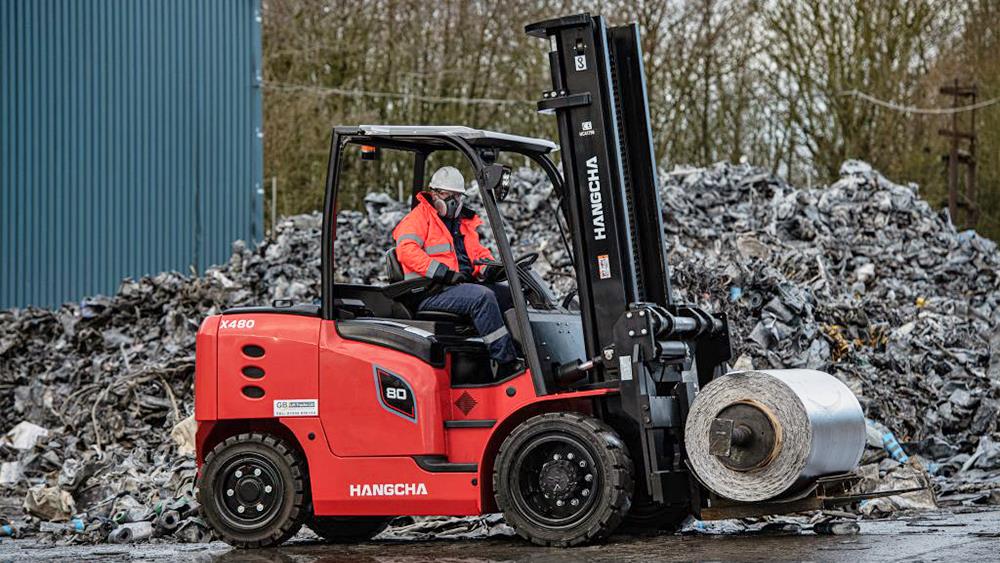

Kyle Hazeldine, Sales and Marketing Manager at Midland Lead, explains why the construction industry should consider abandoning plastic alternatives and return to a wider use of lead as a building material.
The growing pressure on the construction sector to meet development targets appears to have resulted in some negative practices. Although the UK construction industry is committed to achieving net zero by 2050, this article highlights that excessive waste is being generated during the construction process.
While creating energy-efficient buildings with improved heat output and conserving energy are commendable goals, it is essential that this progress does not come at the cost of sustainability during the construction process itself. The UK's construction sector continues to expand, however, the rate at which it generates plastic waste is outpacing this growth.
According to a recent news article published in BMN, which reports on an analysis of European Commission data published by the Copper Sustainability Partnership (CuSP), the rate of plastic waste from the UK's construction industry has increased 15 times faster than that of other European countries since the turn of the century.
The construction and built environment sector are a major source of carbon emissions, contributing to around 40% of the UK’s total output. According to the UK Green Building Council, up to 95% of emissions from the built environment over the next three decades could come from existing structures. Consequently, a significant portion of the industry's decarbonisation efforts will be directed toward retrofitting existing buildings.
Midland Lead calls for construction companies in the UK to assess the products they use and review their sustainable qualities. The use of lead rather than lead alternatives, for example, can have a significant impact on reducing waste, as lead is 100% recyclable and has a minimal negative impact on the environment.
Why lead is better than lead alternatives
Lead has been the material of choice in construction for centuries, praised for its malleability, longevity and recyclability. However, lead-free alternatives, made from materials such as modified polyethylene compound and butyl rubber, have become widely used, and are not recycled as much as lead sheet can be. More than 95% of scrap lead sheet is collected and recycled in the UK, while many non-lead alternatives have a recovery rate of less than 10%.
Midland Lead, honoured with The King’s Award for Enterprise for Sustainable Development 2024, are advocates of sustainable practices within construction and are committed to promoting the beneficial qualities of lead.
We strongly believe that the industry needs to refocus on recycling and that there should be a transparent awareness of the products it is using. Specifically, within the roofing sector, it is important to recognise that lead alternatives contain plastic and as a result, are not sustainable and contributes to the concerning amount of non-recyclable waste that is being produced.
Despite being a traditional roofing material, many don’t realise that lead is in fact incredibly green. When comparing lead and lead-free alternatives’ eco-friendliness, there is no question that lead takes a prime position. Typically, lead-free roof flashing has a 30-year lifespan and a 10 to 25 year guarantee, while lead lasts over 100 years and has a guaranteed lifespan of 50 to 60 years.
Sustainability is embedded through every part of our business, from reducing waste disposal and only using 100% recycled lead, through to energy efficiency, packaging and logistics. We are also the only independent manufacturer offering BBA-certified machine-cast lead sheet with an Environmental Product Declaration (EPD).
Lead could be an important part of the circular economy and is the most sustainable product that can be used in construction, producing zero waste. The process of recycled lead manufacturing uses just 35% to 40% of the energy required to extract original lead from ore. This is partly due to its relatively low melting point: 327°C, Unlike many other materials, lead can be re-melted and recycled forever with no loss of quality.
Over the years the lead sheet industry has carried out numerous campaigns to highlight the material’s many benefits including its sustainability, weatherproofing capabilities, aesthetic appeal, and versatility.
As a result, lead is the most recycled common metal in the world, with higher recycling rates than paper or glass. Lead sheet is in fact one of the most durable roofing products available; lasting 100 years or more. And properly installed and handled, it poses no risk to the environment or people but outperforms all alternative man-made materials in its field.
Lead stands out as an unparalleled material in the construction sector, particularly when considering long-term performance and sustainability. While the construction industry may not be fully focused on recycling, lead sets a powerful example of how material can be environmentally responsible. Because of its low environmental impact during the recycling process and its ability to offer lasting protection, lead should be an essential component of sustainable building practices.